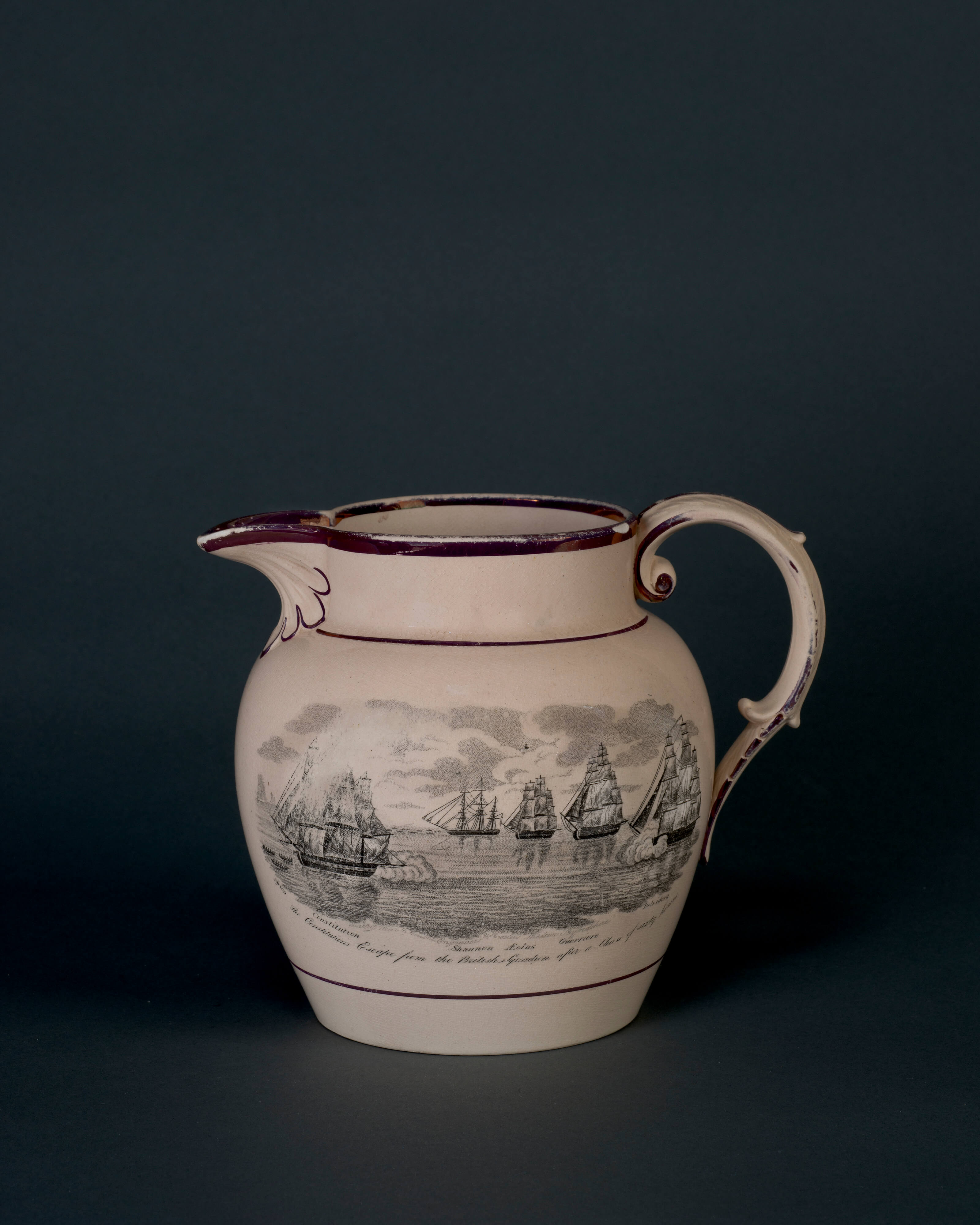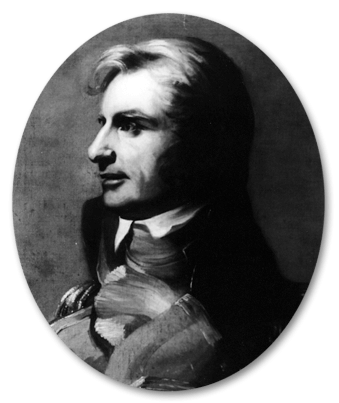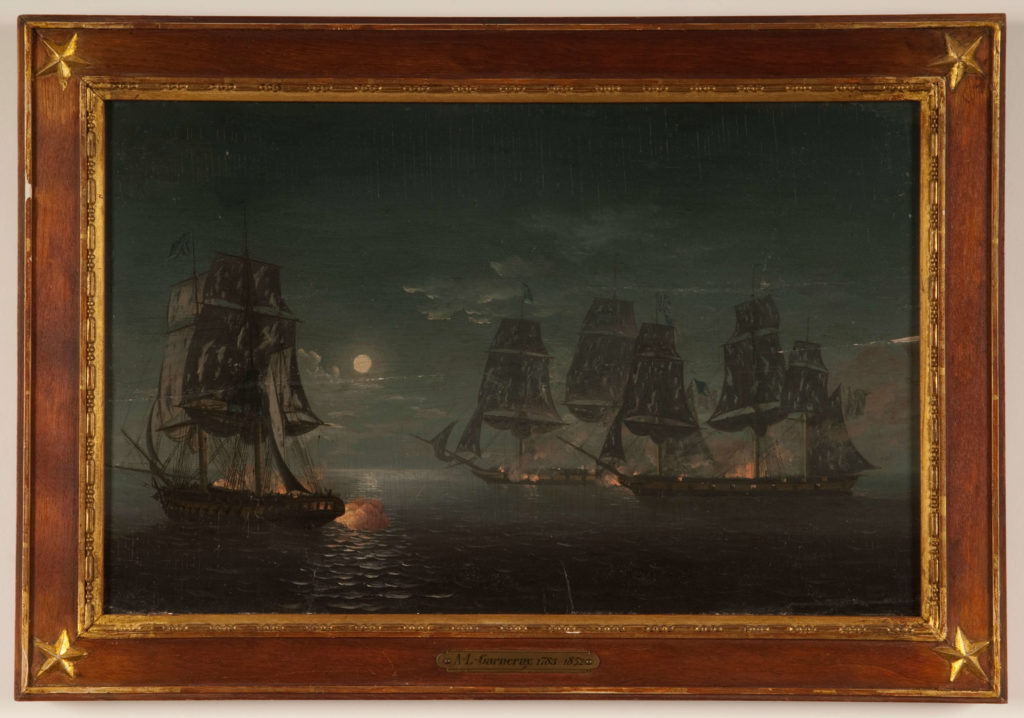

Staffordshire Creamware Pitcher
Probably manufactured by the firm of Enoch Wood & Sons of Staffordshire, England, this pitcher depicts two of USS Constitution‘s exploits during the War of 1812. The first illustration portrays the ship’s 57-hour escape from a British squadron off New Jersey in mid-July 1812. The second shows the climax of the battle between Constitution and HMS Cyane and HMS Levant on February 20, 1815.
The development of transfer ware ceramics in the mid-18th century revolutionized the English pottery industry. Manufacturers first applied paper prints to soft-paste porcelain and enamels, and later to less expensive earthenware. The white grounds of these new “creamwares” and “pearlwares” were a perfect backdrop for black-inked prints of popular military and political heroes, landscapes, and other common motifs. Americans especially loved the many pitchers, plates, bowls, mugs, and vases that glorified the accomplishments of their new nation, and English exporters eagerly seized this market. Between 1795 and 1800, Staffordshire potteries exported almost 10 million pieces per year. By 1808, as the U.S. trade embargo on British goods came into effect, this number fell by 60 percent. In 1815, the Treaty of Ghent, which ended the War of 1812 between Great Britain and the United States, released restrictions on trade between the countries. The surplus products of the past seven years enabled merchants to import 21 million pieces of English ceramics in that year alone. It was not until the 1870s that the domestic American ceramics industry began to stem the tide of cheap English imports.
Creator
Enoch Wood & Sons
Date Created
1815-1820
Medium
Ceramic
Dimensions
[H]6 in.
Catalog Number
1681.1
Credit Line
USS Constitution Museum Collection.
Terms of Use


This work is licensed under a Creative Commons Attribution-NonCommercial-NoDerivs 3.0 Unported License

